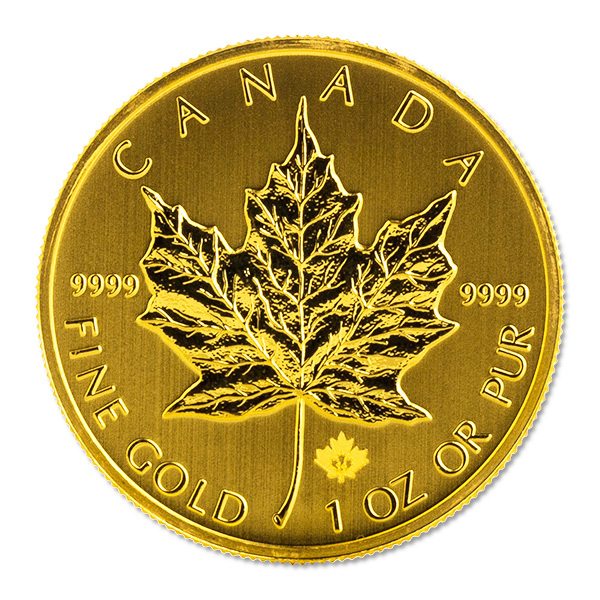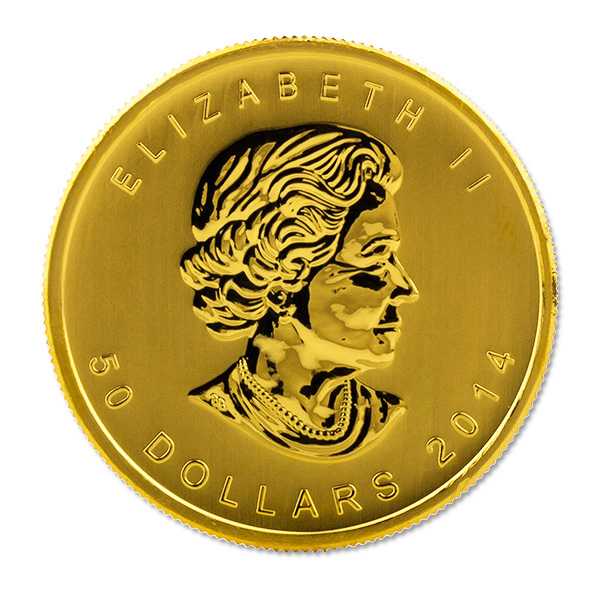

Gold coins are a popular way to add precious metals to an investment portfolio for a number of reasons. They’re attractive, relatively affordable and allow holdings to be built up or sold off in convenient increments. Of course they do have drawbacks, and for many investors one of them is that their gold content is usually lower than bullion bars or other forms of metal. There are exceptions though, and the gold version of the Canadian Maple Leaf is one of them.
The Maple Leaf is Canada’s official bullion coin and is available in various metals and sizes. It’s legal tender under Canadian law so each coin has a face value, although this is far lower than the actual value of the metal it contains. The gold Maple Leaf is one of the few 24 karat bullion coins available, so if you want to accumulate high purity gold it could be a good option.

The gold Maple Leaf is available in five sizes, each with a different face value. These are 1⁄20 oz ($1), 1⁄10 oz ($5), 1⁄4 oz ($10), 1⁄2 oz ($20), and 1 oz ($50). The face values are purely nominal, with the actual price of the coin closely tracking the spot price of gold according to their weight. All sizes have the same design, with the Queen’s head and the face value on the face and a maple leaf and the weight on the back.
In 2007 the Royal Canadian Mint produced a 100kg Maple Leaf in 99.999 percent pure gold, with a face value of $1 million Canadian dollars. This was intended as a one-off item to promote a new range of high purity bullion, but attracted so much attention that the Mint later announced it would make them to order. Several have now been made and sold.
Unlike most gold bullion the Maple Leaf is considered a pure gold coin, with a gold content of 99.99 percent (99.9 percent for coins made between 1979 and 1982). Limited edition coins with a purity of 99.999 percent are also available.

The Maple Leaf is available in three different finishes. The most common is the bullion standard, intended for purchase by investors. This is produced by striking a gold coin blank once with the die, and has a lined background. The finish has been criticized for its appearance, as it often looks as if the coins have been scratched.
Proof coins are sold as collectible items and have a considerable price premium above the gold spot price. They have a mirror polished background and a frosted relief, thanks to the die being struck multiple times. Specimen coins are also aimed at collectors and are finished to an extremely high standard with highly polished relief against a satin background.
As well as the Maple Leaf a variety of other collectable gold coin designs are offered by the Royal Canadian Mint in proof and specimen standards.
Because the Maple Leaf is a pure gold coin it’s extremely soft and vulnerable to damage. Secondhand bullion coins often show dents or scratches. If you’re buying them for the gold content this has little effect on their value as the price for bullion coins has little premium over spot price, so this shouldn’t put you off – it’s the metal you’re investing in, after all.
Next Page → : Gold Panda Buying Guide